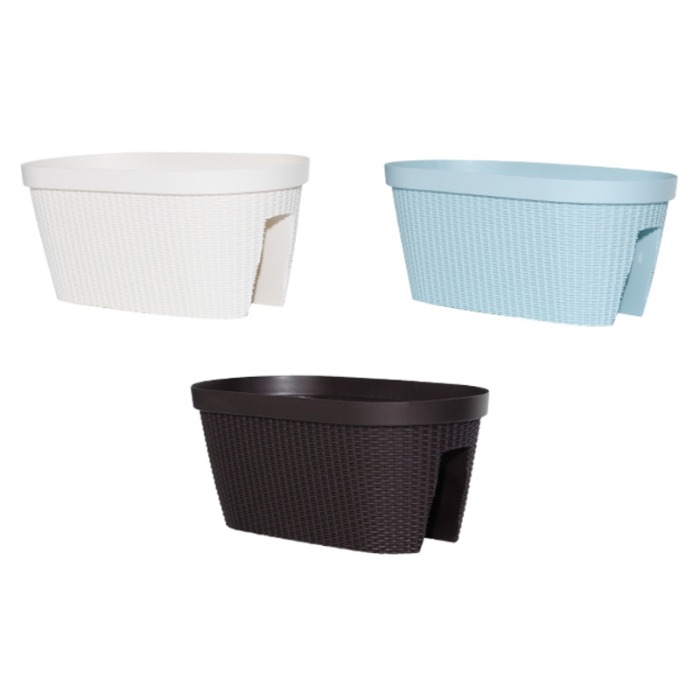As temperatures begin to drop, gardeners and plant enthusiasts often face the challenge of keeping their beloved greenery alive through the winter months. One effective solution that has gained popularity is the use of insulated pots. These specially designed containers provide a buffer against the cold, helping maintain root temperature and overall plant health. Whether you’re dealing with delicate herbs or hardy perennials, understanding how insulated pots work can make a significant difference in your plant care routine.

Insulated pots are particularly beneficial for those who rely on outdoor rectangular flower pots to decorate their patios, balconies, or garden walkways. These pots often remain exposed to cold winds and fluctuating temperatures. Without proper insulation, soil within the container can freeze, damaging root systems and stunting plant growth. Insulated pots, however, add a protective layer that slows down the heat loss, maintaining a more stable environment for plant roots.
This benefit extends to people using indoor outdoor flower pots, especially in areas where pots are occasionally moved between spaces. A plant placed on a porch during the day and brought in at night can suffer from thermal stress due to sudden temperature changes. Insulated containers help reduce this impact, allowing smoother transitions. For instance, those who enjoy rotating small coloured plant pots between indoor windowsills and outdoor tabletops will find that insulated materials cushion plants from cold shocks more effectively.
The insulation in these pots typically comes from either the pot’s material or a built-in design. Double-walled plastic, thick ceramic, and even modern resin-based materials can serve the purpose. What matters is the ability of the pot to resist heat transfer. In this regard, larger outdoor rectangular flower pots often benefit from thicker walls and more soil volume, which naturally provides better insulation. However, smaller containers, including small coloured plant pots, may require additional care, such as wrapping with fabric or using inner liners, to achieve similar thermal protection.
One of the key reasons insulation matters is that plant roots are much more vulnerable to cold than their above-ground parts. A sudden freeze can advance to root cell damage, inhibiting water and nutrient uptake even if the foliage remains intact. With indoor outdoor flower pots, which may be placed near drafty windows or unheated entryways, insulated designs prevent cold surfaces from drawing heat away from the soil.
Color also plays a role. Darker pots tend to absorb more heat during the day, which can slightly warm the soil, while lighter, smaller, coloured plant pots may reflect light but offer less passive heating. That’s why using the right pot in combination with strategic placement—such as near a sunny wall or under a canopy—can enhance the effectiveness of insulation.
Another advantage of insulated pots is that they reduce the risk of overwatering during winter. Cold soil tends to retain moisture longer, which can advance to root rot. By maintaining a more balanced temperature, insulated indoor outdoor flower pots help keep soil structure healthier and more responsive to plant needs. This is particularly useful for people who use outdoor rectangular flower pots for shrubs or winter vegetables that remain outdoors throughout the season.
Furthermore, portability becomes easier with insulated designs. Many modern small coloured plant pots are made from lightweight yet insulating materials, allowing homeowners to easily rearrange them as the light changes with the seasons or to protect them from unexpected cold snaps.
For gardeners living in regions with long or unpredictable winters, incorporating insulated pots into their setup is a simple yet effective strategy. Whether arranging larger outdoor rectangular flower pots along a snowy terrace or placing vibrant small coloured plant pots around a window box, insulation can make the difference between thriving plants and frostbitten casualties.
In conclusion, insulated pots act as guardians for your plants during cold seasons. They moderate soil temperatures, reduce watering risks, and help ensure smoother seasonal transitions. For anyone who juggles indoor and outdoor plant care, especially with a mix of indoor outdoor flower pots, embracing insulation is a smart and worthwhile consideration.

 English
English 日本語
日本語 Español
Español Deutsch
Deutsch عربى
عربى

